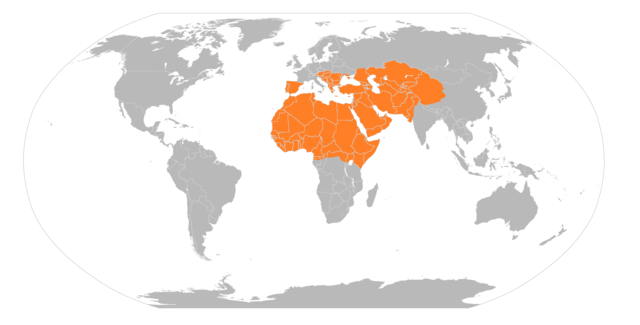Hassan Abbas—
During my recent travels to Iraq, I heard first hand stories about the genesis and rise of Islamic State of Iraq & Syria (ISIS), also known by its Arabic acronym Daesh (al-Dawla al-Islamiya fi al-Iraq wa al-Sham). The rapid expansion of this deadly militant group over a significant chunk of Iraq materialized through sheer brutality, oppression, and tyranny. A large section of the Syria-Iraq border region has evaporated in the process enabling collaboration and synergy among battle hardened militants from the Syrian warzone—an incubator for the new generation of terrorists. These militants are made up of Salafi strategists; foot soldiers from Saudi Arabia, Tunisia and Jordan (financed largely by wealthy donors in Qatar, Kuwait & Saudi Arabia); and fighters belonging to Zarqawi inspired “Al-Qaeda in Iraq.” In the case of Iraq, old Baathists (who are careful to wear masks during ISIS parades) also jumped in the fray in hopes of reclaiming at least some part of their lost power and prestige. Credible media reports maintain that militants from over 80 countries— including Western states—are represented in the conflict theatre. Leading this dynamic and diverse bunch of thugs is Abu Bakr Al-Baghdadi, the mysterious leader of ISIS, who is the self-proclaimed “Caliph” of this so-called “Islamic State”—a fluid state at best which, in reality, is a professionally guarded and well equipped sanctuary of terror. Massacring Muslims and non-Muslims alike and beheading any Westerners that they can get their hands on are the trademarks of ISIS.
The idea of ISIS is neither new nor unique. Their tactics are modern but their ideology borrows from an extremist strain within the Muslim discourse. In more ways than one, the group is a byproduct of modern Muslim Wars. This includes internal conflicts as well as violent regional rivalries ranging from Iran versus Saudi Arabia to the Israel-Palestine clash. Many observers in the Middle East I talked to also blame the Western powers for their unconditional support and arming of “rebels” in Syria who ultimately grew into ISIS.
Shia versus Sunni is yet another lens through which this crisis is being viewed, but an astute Iraqi-American scholar told me that within Iraq many Shia political leaders view the ISIS onslaught primarily as a Sunni versus Sunni encounter inspired by regional oil politics. Turkish over-enthusiasm to expand its regional influence muddied the waters too.

At the end of the day, ISIS is attracting militants of all hues and colors from around the world. Their worldview is more akin to Al-Qaeda’s agenda—hatred for all things Western, bigotry, and violence-driven policies—but they are taking the Taliban route in terms of establishing active control over territory, enforcing draconian laws and eliminating all forms of dissent through brute force. Tribal identity is also a common denominator between ISIS and Taliban. ISIS in this sense can be called an “Arab Taliban” group. It differs from Afghan and Pakistani Taliban in some ways though—for instance it generates its primary revenue from oil rather than opium, smuggling and kidnapping for ransom; it is more advanced in using social media for marketing its brand; and the number of recruits it is drawing from Muslim communities in the West is much higher in comparison.
These complex patterns have rightly alerted the Western states as well as many of the Muslim states (including those who initially funded it) about the challenge ISIS poses to global security today. ISIS can potentially mutate into some other shape in few years—more fierce and unyielding—and yet more adaptive to changing scenarios in Middle East, for instance in the context of a succession crisis in any of the leading Arab or Gulf states. In this backdrop, a mere military response—and that too from the air alone—will remain insufficient. It will ultimately have to be about governance, justice, and accountability in the Muslim states affected by ISIS. The rampant sectarianism too will have to be treated through pluralistic thinking and education reforms. It’s a tall order given the quality of available leadership in the Middle East today.
Note: I am very thankful to Muhammad Ali Banoon and Tehrim Z. Hassan for research support for this write up.
Hassan Abbas is Professor of International Security Affairs and Chair of the Department of Regional and Analytical Studies at the National Defense University’s College of International Security Affairs in Washington DC, USA. He is also author of The Taliban Revival.
Further Reading:
From the web:
Richard Barrett, Foreign Fighters in Syria
“Areas Under ISIS Control”, New York Times
Zeba Khan, “Words matter in ‘ISIS’ war, so use ‘Daesh’”, Boston Globe, October 9, 2014
“ISIS Fast Facts”, CNN, November 17, 2014
Amir Rana, “ISIS’s Cascading Effect”, Dawn, July 13, 2014
Declan Walsh, “Allure of ISIS for Pakistanis Is on the Rise”, New York Times, November 21, 2014
Graeme Wood, “What ISIS’s Leader Really Wants?”, New Republic, September 1, 2014



 Deobandism, Islam and the Religious Narratives of the Taliban
Deobandism, Islam and the Religious Narratives of the Taliban